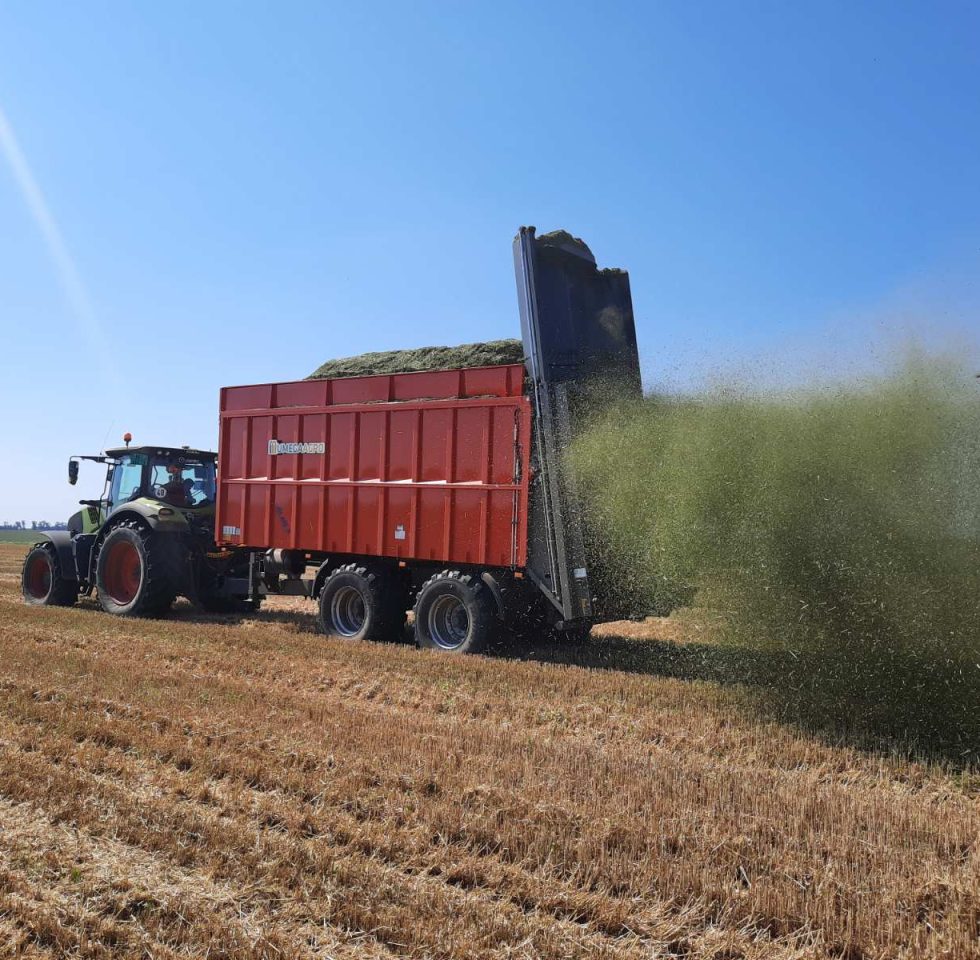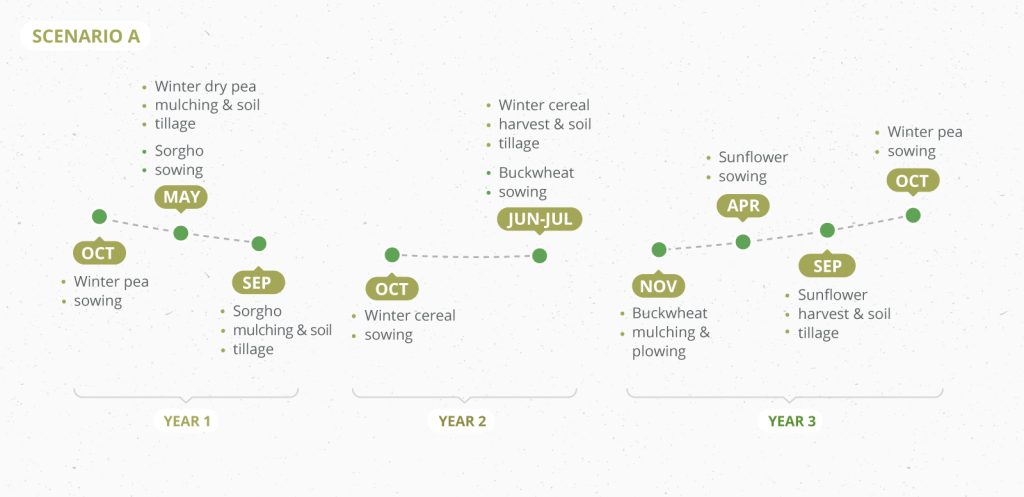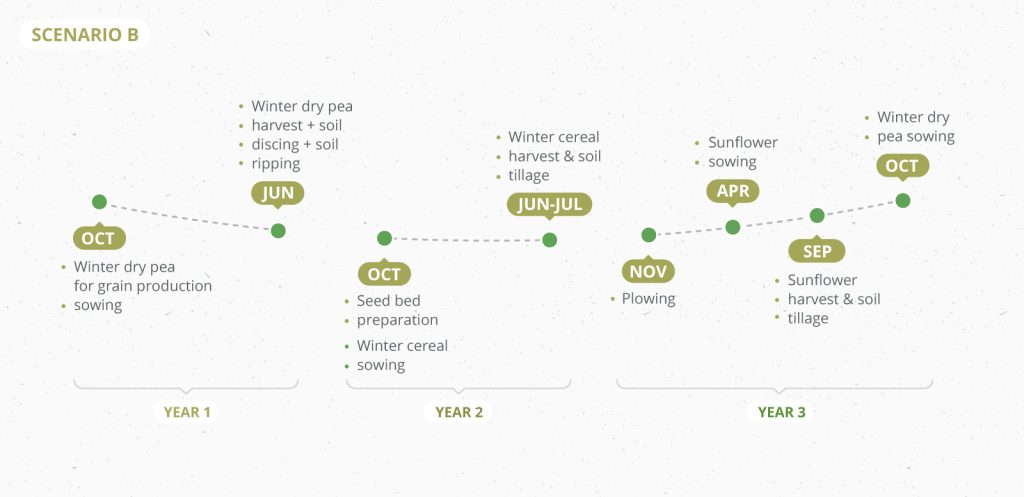Njamito Goes Fairtrade for Cocoa and Vanilla
March 31, 2025Njamito is now Fairtrade certified for cocoa and vanilla! Here’s what that means for farmers, the planet, and the values behind our meal-in-a-bottle.
Read articleInstead of relying on large imports of synthetic fertilizers produced in an extremely unsustainable way, LoginEKO has been working overtime to develop green manure models for large-scale farmers.

For the first time since the invention of synthetic fertilizers, farmers across the globe are faced with a gigantic challenge – how to produce enough crops to feed the world. And this is because right now, we are running out of synthetic fertilizers. It’s a first.
The fertilizer shortage is due in part to the current international political situation, including the sanctions on Russia, the world’s largest exporter of fertilizers. In addition, the agricultural industry is becoming increasingly worried about soaring prices of gas, the key energy source in the production of synthetic fertilizers. This has already driven up the costs of fertilizers by 151% on an annual basis, with some spiking 300% since September 2020. And this fertilizer shortage is not expected to go away in 2023.
However, dropping the use of synthetic fertilizers overnight might lead to catastrophic consequences, leading to severe crop degradation and starvation of the planet.
We have to get this transition right.
The good news is that we already know how. And this knowledge is backed by data.
Instead of relying on large imports of synthetic fertilizers produced in an extremely unsustainable way, we can learn how to grow our own fertilizer where we need it.
LoginEKO’s Research and Development Center has been working overtime to develop green manure models for large-scale farmers.
Focusing on the production of staple crops cultivated on large areas, the LoginEKO team, backed by the Login5 Foundation, are taking on the responsibility of testing by trial and error, and learning from our mistakes, to develop simple and ready to use sustainable agricultural models that will plow the way forward into a future of green manure.
On the extensive fields in Northern Serbia, the Pannonian Basin Lowland serves as a perfect proving ground for sustainable agricultural models. The heavy clay, slightly acidic soil, rich in organic matter, with low water permeability, coupled with continental climate allows for a growing season that typically lasts for seven months.
Over the past three years, LoginEKO teams have been testing various combinations of crop rotation models and legume-based farming. Two models have proven to be particularly effective, and could be replicated in similar climates with only slight modifications.
Both models are based around the sowing of traditional crops such as winter wheat, winter peas, and sunflowers. So far, nothing new. But add an intercropping sequence, mulching, and sustainable soil tillage techniques, and your cereals thrive.


LoginEKO’s test fields, using legumes as green manure, produced up to 35% more wheat than the control plots. And the yields were not just bigger, they were also better. The wheat that grew alongside legumes contained significantly more proteins. And the overall quality of the soil improved dramatically.
Implemented in a correct sequence, intercropping techniques with legumes create unique conditions for the extraction of nitrogen from the air, which is then pumped directly into the soil. And that’s exactly what crops need. This way, we avoid depleting the soil so vital microorganisms can flourish and humus content can be preserved.
But the LoginEKO team is not stopping! Four to six-year crop rotation models promise another breakthrough for sustainable farming. Scientists believe that longer models could ramp up biodiversity and in turn break down pests and disease cycles. When proven, this practice would eliminate the need for pesticides.
As well, large-scale farms will be able to safely switch to completely sustainable ways.
Synthetic fertilizers and pesticides help us produce more now at the expense of future yields. So, only those farmers capable of looking further into the future will be able to produce and sell enough crops to keep their businesses running in the long run.
This year, the LoginEKO team, practicing crop rotation and using green manure, achieved the highest yield of winter wheat at 6.9 T/ha. The national average yield of winter wheat in Serbia, using conventional methods, is 5.1 T/ha. And, while it might be too soon to claim that sustainable agricultural practices are already economically viable, we are not far from achieving this goal.
As the effects of soaring prices of synthetic fertilizers become increasingly apparent, providing alternative sustainable solutions to farmers becomes imperative.
Two green manure models that work are a promising start and an important cornerstone in a transition towards a fully sustainable food system.
***
Sources:
Njamito is now Fairtrade certified for cocoa and vanilla! Here’s what that means for farmers, the planet, and the values behind our meal-in-a-bottle.
Read articleIdealism met reality as we launched our meal-in-a-bottle, Njamito. After 100.000 bottles sold, here’s what we learned about organic food and market adaptation.
Read articleWith organic seeds in short supply, we launched our own organic seed production journey to secure sustainable farming practices.
Read article